USS MULLINNIX DD-944
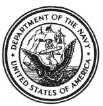 1959 - Unitas I
1959 - Unitas I 
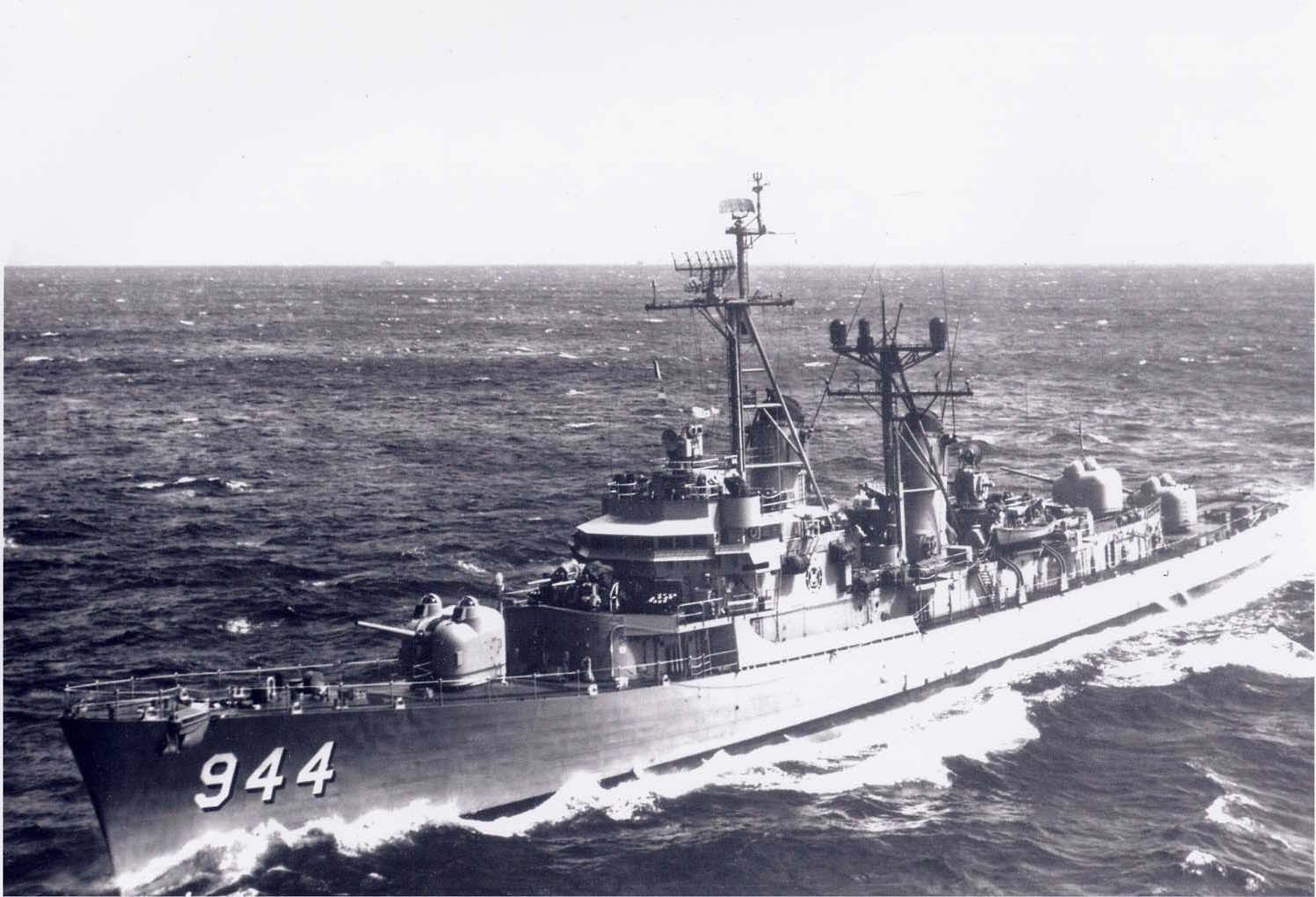
Mullinnix Postcard - Date Unknown (Note forward 3")
1959 Mullinnix Deck Logs (Missing July-Dec)
January 1959 (PDF)
February 1959 (PDF)
March 1959 (PDF)
April 1959 (PDF)
May 1959 (PDF)
June 1959 (PDF)
_______________
Excerpt from "The Last Gun Ship - History of USS Mullinnix DD-944"
A Historical Novel By Frank A. Wood
The tradition of rhyming midwatch (0000-0400 Hours) deck logs to ring in the new year are almost as old as the Navy itself. Though not official, this storied tradition is over-looked by command and will probably continue for years to come. The practice of keeping the deck log entry short, concise, articulate is replaced my holiday cheer and riming prose. The honor of composing the first on Mullinnix went to LTJG J. A. Sears, JR, USNR, who penned:
Moored here in Boston on a rather brisk night
Warmed by the quarterdeck Christmas trees' light.
Port side to pier three using standard manila
My coat lined alpaca, or perhaps it's chinchilla.
With rigged wire preventers of inch and one-eighth
We watch for the Atlas' orbit in spath.
We have been here in Charlestown most of this year
And are currently on the west side of the pier.
Cold iron prevails in our hill quite impervious
With the shipyard providing the needed pier servious
Of telephone, power, steam, nuts and bolts,
A few BTU's and a couple of volts.
Cold iron watches on roving patrols
In the Main engine spaces - The city clock tolls
The birth of another in a series of years
That move silently round like some well-oiled gears.
Material X-RAY is our current condition
And its absolute setting is no supposition
For its checked by security watches terrific,
Merrill-Lynch, Pierce, Fenner, and Smithic.
Ships present include some of CINCLANT's best tricks,
The BOSTON, the WASP, and the Young Mullinnix,
McGOWAN and WADLEIGH, the Stephen DECATUR,
The shiny new EDSON who will cross the Equator.
There are TUGS from the District, YD's from the Yard
But duty ashore can't be nearly as hard
Or as interesting as it can be on a "CAN"
An all-purpose ship for a well-rounded man.
SOPA is here in the hull of the Boston
He’s COMCRUDIV FOUR near a town I get lostin.
We have been in commission just under a year
And March '59 makes our birthday quite near.
The commissioning program was something to boast
With grand Mrs. Mullinnix here from "The Coast".
The Ensign was broken, the first watch was set,
Twas a day that none of us soon will forget.
An outfitting period quickly ensued
And the hull with new Ship-Alts was firmly subdued
By air hammers, chippers, and welders galore
But by May we survived and left Boston's shore.
After training in GTMO, we went south with a stranger
An obscure little vessel known as the RANGER.
From Trinidad's coastline we sailed for Brazil
And we drilled and we drilled and we drilled and we drilled.
Then the Shellbacks gave out with sadistic ingratitudes
As we left in our wake the Northern Horse Latitudes.
On to Rio, Bahia, and Reciffe too,
Where we welcomed the people, they welcomed our crew.
Our Tampico stop later proved one of the best
And when it was time to sail from the west
Back to Boston for overhaul, families, forsooth!
For a few dry martinis, light on vermouth.
With our second yard period a thing of thing past,
We have painted the ship from the keel to the mast.
As COMSOLANT Flagship we'll soon be displayed
So it’s goodbye to bean-town and "Anchor's Aweigh".
Anapestic quadrameter couplets, Adieu!
To my whole duty section a Happy Year New.
_______________
The new Navy Year would not have been complete without the traditional AWOL shipmate. The Mullinnix' first AWOL sailor to ring in the ship's first full year of life was shipmate G. F. Pearl, declared AWOL at 0330 Hours, mustering in the year 1959.
This would be a string of firsts of course. Seaman Pearl was only following in the footsteps of the Mullinnix' first AWOL shipmate – none other than Fireman John Gerald Budd, who was the first ever AWOL Mullinnix sailor at 0800 on 10 March 1958 – only 3 short days after the ship was in commission. One wonders if this is stage-setting of things to come?
In an article entitled 'Roster of New and Converted Ships Joining The Navy' in the February 1959 issue of All Hands Magazine, Mullinnix was the first ship listed under the 'new ship' listing. The new year found this new ship Mullinnix moored port side to pier 3 west, Boston Naval Shipyard, Charlestown, Massachusetts, using standard class mooring lines doubled, modified by additional 1 1/8" steel wires fore and aft. SOPA was CONCRUDIV 4 in USS Boston CAG-1. On 2 January, running under a split engineering plant with boilers 1B and 2A and generators 2 and 4 in service, she steamed for Norfolk, Virginia for a Tender Availability, in accordance with COMDESLANT Op Order 232359Z of December 1958. Grey and white snow clouds covered the sky as she slipped passed Cape Cod Light. As a chill wind hit them like a blast, the excitement started to build in the crew - they were headed back to home port.
The first visit to Norfolk hadn't been long. This trip was one-way. They were indeed heading home.
Two days later with the morning sun flickering like a Zippo flame, she passed Cape Charles Light and commenced steering various courses at various speeds conforming to Thimble Shoals Channel regulations. At 1158 she passed Fort Wool abeam to port, distance 1200 yards. The crew could taste home port. Pilot Captain L.W. George aided maneuvering her alongside the pier. Mullinnix moored portside to fellow Forrest Sherman USS Bigelow DD-942 in a nest of four ships at Berth 206 Destroyer – Submarine piers (D&S), Norfolk. She rested out board off USS Shenandoah AD-26, USS NOA DD-841, and Bigelow. On 7 January, the nest grew to six as the USS Meredith DD-890 and USS Stribling DD-867 moored alongside to starboard.
The crew took full advantage of the days in home port as they were aware that the Mullinnix was soon to return to South America in early February. Some, took too much advantage, some like Seaman Andy Charles Weckbacher.
Weckbacher was the most unNavy-looking seafaring specimen who ever served in the Navy. He had grown up in tough working-class South Boston. Andy always contended his innocence but rumor had it he'd join the Navy to hide from the law. At 0217 the night of 8 January, the ship received a report Weckbacher was treated for face lacerations at the USS Sierra AD-18 (a destroyer tender that was in commission for 49 years!) for injuries received from an unknown assailant at the D&S gate #2. No one knew at the time, but this was just the beginning of a string of incidences that would track all the way to the southern hemisphere.
Midday on 9 January, Mullinnix headed to ammunition anchorage Foxtrot near Norfolk Naval Shipyard, Portsmouth. She anchored in 6 fathoms of water, sand bottom, with 30 fathoms of chain to the starboard anchor. Once the off-loading of 288 H/E Hedge Hogs and pyrotechnics was complete, she moored portside pier Four (4), berth 26, Norfolk Naval Shipyard, Portsmouth, Virginia. Cold iron watch was set in all engineering spaces as Mullinnix was receiving all services from the pier. SOPA was COMCARDIV 6 (RADM G.W. Anderson) in USS Saratoga CVA-60 transferring later in the month to USS Essex CVS-9.
The rest of January saw Mullinnix and her crew engulfed in minor repairs, on loading equipment and stores, as well as crew training. Other than a quick pier change to Berth 1A, Pier 1 in Portsmouth on the 16th with the aid of US Navy tugs YTB 499 and YTB 502, Mullinnix kept busy in preparation for a lengthy assignment with the nation’s allies in South America.
Unfortunately for shipmate W.L. "Willy" Campbell, he would not be riding south on the Mux. Campbell was a mean bastard. Campbell hadn't lost his 'Na Yacker' accent. Like when he'd say, “Fuggedaboutit!” (forget about it). He'd tell a story of when he was a kid growing up in New York City. "We all lived on Mean Street," he boasted. "The farther down the street you'd go the meaner it got. And I lived in the last fuckin' house!" He had a slight limp like a sailor who'd been in a bar brawl. Which he had - most of the time. Campbell's training consisted of a temporary transfer to US Naval Retraining Command, Norfolk, Virginia, under guard, for 20 days of hard 'training'.
On the midwatch of 17 January at 0300 Andy Weckbacher was once again the man of the hour as he was delivered on board by the Shore Patrol. First thing out of his mouth was, "What the fuck happened to Campbell?"
Fueling was completed on 29 January from YO-59. The following morning Mullinnix slipped out of Portsmouth, to begin preparations for steaming south to Naval Base, Port of Spain, Trinidad in accordance with COMDESLANT Movement Orders 2-59. After making the mandatory degaussing run to maximize safety, she anchored in ammunition anchorage FOGTROT with 30 fathoms of chain to starboard anchor, mud bottom at 1142. After on loading 288 hedgehog rockets and 6 Mark 32 Torpedoes, and having transferred off 60 3"/50 cal. VT non-frag projectiles and 240 3"/50 AP projectiles, Mullinnix got underway to D&S piers, Norfolk, Virginia.
Norfolk weather in early February can resemble the Yukon. The sky and sea were slate gray and slack, the sun burned cold in the cold clear sky, the NE wind the kind that can bite your noise. During these mornings the crew mustered in a foul mood, at foul weather parade.
The 3rd of February was witnessed to two collisions. The first, shortly after 1AM, in Albert Juhl's corn field northwest of Mason City, Iowa, pilot Roger Peterson flew his plane into the ground, killing himself, Buddy Holly, Ritchie Valens, and J.P. "Big Bopper" Richardson. The viscous Iowa weather was to blame.
The second, on this 'the day the music died', witnessed Mullinnix moving, with the aid of YTB 380, 533 and 500, from pier 23, berth 233 to pier 20, berth 205, D&S Piers, Norfolk. Shortly thereafter at 1620, sister ship USS Bigelow DD-942, as sisters tend to do, gave Mullinnix a small kiss in the form of damage to her port screw guard while coming alongside. The Engineer Officer and damage control assistant inspected for further damage within the ship and found no evidence of interior damage.
Time in port was growing short as Mullinnix topped off her fuel tanks on 9 February. The sky in the East was still pink with sunrise, above Mullinnix the clouds were swollen with snow. In the early morning of 11 February, with fires lit under 2A boiler, amid a few tears from gathered family members, Mullinnix slipped out of Norfolk headed to the U.S. Naval Base in Port of Spain, Trinidad. For those with family in Norfolk, 5 May was a very long time to be away.
Acting as flag ship for DESRON 2, under the command of Commander L. M. Mustin, she steamed towards the South Atlantic for the second time. Rear Admiral Edward C. Stephans hoisted his flag aboard Mullinnix, and she became the flagship for Commander South Atlantic Force. Operationally the cruise was named 'Unitas 1'. She was accompanied by USS Lester DE-1022, USS Van Voorhis DE-1028, USS J. K. Taussig DE-1030, USS Hartley DE-1029, and USS Spikefish SS-404.
Due to Castro's take over in Cuba in January, many sophisticated exercise with several South American country's Navies lay ahead for the crew. The trip south was filled with mock exercises - general quarters, fire drills, steering casualty drills, and abandon ship drills. Mock exercises didn't necessarily translate into no danger for the crew. On 12 February, while ascending to the main deck through a hatch on the forecastle, "Johnny" Goldsmith received a slight contusion of the left abdomen when he was struck by the gun barrel on MT51 "not due to his own misconduct". Treatment was administered by the Medical Officer and Goldsmith returned to duty.
Steaming at 17-20 knots Mullinnix made good time. The crew began to experience the Outer Limits - like sensation of departing winter and entering summer in a nautical blink of an eye. The seasonal change was completed during a midday meal. As the crew exited the mess decks from the hatch on the starboard side, the sun was like a white flame in the sky, the deck rippling with heat, the air smelling of salt, their skin slick with a salt-sweat combination that had a baby oil-like viscosity.
As she got closer to Trinidad, ASW drills were added to the daily mix. On 15 February, she conducted structural test firing of the 3-pound saluting battery as well as practiced signal and sonar drills. Under a watery midday sun, Mullinnix obtained radar contact with Cape Tres Puntas, Venezuela, bearing 165 degrees T distance 80 miles at 2140. Then with Los Testigos Island, bearing 190T distance 38 miles.
Shortly after sighting Chacachacare Light on 16 February, Mullinnix stationed the special sea detail. Steaming passed Diegos Island abeam to port, then Five Islands abeam to starboard, she slipped into the port side of Pier 2, US Naval Base, Port of Spain, Trinidad, British West Indies (BWI). The engineers let the fires die out under Boiler 1B and Mullinnix began receiving fresh water and telephone services from the pier.
GO TO Liberty Call Trinidad 1959
_______________
As a reminder that this wasn't just a milk-run, dawn broke over Mullinnix on the 22nd with a sky a shade of azure blue only seen in airline magazines. As the crew looked across the sea at the sun it appeared molten and watery, wrapped in vapor. Task Force 86 was steaming in column open order in company with USS Van Voorhis DE-1028, USS Lester DE-1022, USS Taussig DE-1030, and USS Spikefish SS-404 on base course 102 degrees T at base speed 16 knots, Mullinnix was guide in station 1. The next several days were filled with exercises in preparation with much larger and more sophisticated exercises with the Navies of several South American countries.
On the afternoon of the 23rd, USS Van Voorhis was detached by COMSOLANT to proceed independently to Recife, Brazil. The following day the weather took a turn for the worst. The barometer noise-dived and the sky turned a chemical green. The swells were smooth-surfaced and rain-dented, the wind flecked with salt. To remind the crew just who's Navy they were in, Admiral Stephan held an inspection with the crew mustering at quarters in foul weather parade. On the eastern horizon, a line of storm clouds shot forks of white lightning, probing the sea here and there as if searching for sailors. Mullinnix started to dip and dive as the swells increased.
For some of the crew this was there first time in rough seas and experiencing the effects of seasickness. At first many thought they were going to die but then they reached the stage where they feared they may not.
But to be alive for 25 February 1959 meant everything to a Navy man. The crew that celebrated their crossing last July was going to get to invoke their lessons learned on yet another group of mangy pollywogs. With the sun covered by rain clouds, the wind flecked with salt, the rain held off for a time. A black cloud moved across the sun, dropping the Mullinnix into shadow. As the sun went behind this rain cloud, it burned a purple hole through its center. When the sun finally broke through a cloud, the tops of the mast and stacks lit up as though they had been touched by fire. It was time. The ship’s log described the day as:
* 0800 Mustered the crew on stations.
* 1115 Shifted all pollywogs into the uniform of the day. Stationed the Equator lookouts. Commenced making all preparations for receiving King Neptunus Rex and his court on board.
* 1303 Maneuvering on various courses and speeds to enter the realm of Neptunus Rex.
* 1330 Davy Jones came aboard.
* 1331 His majesty Neptunus Rex and members of his court came aboard for the purpose of converting all Mullinnix pollywogs into trusty shellbacks. Broke the flag of Neptunus Rex. Entered the realm of Neptunus rex and commenced the initiation ceremonies.
* 1537 Completed the initiation ceremonies. No pollywogs remain on board. King Neptune left the ship. Hauled down the flag of King Neptune.
* 1538 Maneuvering to rejoin formation. Set course 110T and speed 18 knots.
Dry thunder pealed slowly across the sky which was the color of a day-old bruise. As the heat went out of the day, the summer light seemed to ascend higher in the sky, so that the sea itself became a flat silver plain, mirror like. Flying fish sailing diagonally from the bow like sparkling metallic grasshoppers fleeing from an approaching mower.
Early morning, 27 February, at 0156 Mullinnix obtained a sonar contact bearing 285 distance 750 yards. The ship maneuvered at various courses and speeds to investigate contact. 0158 Contact evaluated as possible submarine. Was it the Spikefish? This close to Cuba one wondered if it was one of them? You never knew for sure.
Sailors do know one thing for sure. Your time on any one ship is finite. Case in point was that of Ensign Alan Brown and shipmate Jim Young. Brown transferred, Young discharged. Fellow crewmembers, plank owners, and shellbacks. Their relatively short time as part of Mullinnix history complete, their memories just beginning. Both would be the first to tell you, they’re better men for serving on board Mullinnix.
Maneuvers and ASW exercises continued while in route to Rio. In column formation with Mullinnix in station 1, Van Voorhis in station 2, Lester in station 3, Taussig in station 4, and Spikefish in Station 5 on course 288T at speed of 8 knots, the ships entered Rio de Janeiro Harbor passing De Sao Cruz abeam to starboard, De Sao Joao abeam to port on 3 March. At 0759 a tug delivered civilian Pilot Capt. V. Ginheiro came on board. Passing De Villegagnon Mullinnix rendered honors and fired a 21 Gun Salute to the Nation of Brazil, braking the Brazilian flag at the main truck. The Brazilian Navy returned the 21 gun salute from Enxadas Island. At 0906 Mullinnix was moored portside to Finger pier at Praca Maua, Rio de Janeiro, Brazil, with standard mooring lines.
GO TO Liberty Call Rio 1959
_______________
Before dawn on 9 March, Mullinnix commenced making preparations for getting underway at 0300. She received several civilians as observers for 2 days operations in accordance with GHG. NR.2 to COMSOLANT Op Order 3-59. That afternoon she anchored in Enseada da Estrela in 9 fathoms of water, muddy bottom, with 60 fathoms of chain to the starboard anchor. Ships present include USS Joseph K Taussig DE-1030, USS Lester DE-1022, and Brazilian Navy's Araguaia D-14, Ajuricaba D-11, Riachuelo S-15.
The crew was exercised at general quarters the following day as well as engineering casualty drills. At 0913 the ship fired four 7.2 inch plaster loaded hedgehogs. Following a full successful day of exercise with the Brazilian Navy, Mullinnix returned to Finger Pier.
All good things must come to an end, so they say. Mullinnix, drenched in afternoon sunlight, was underway from Finger Pier at 1744 on 12 March. Destination Uruguay with four days of maneuvers standing between the crew and Montevideo.
Mullinnix was greeted at Montevideo with one mile visibility, heavy rain hitting hard on the aluminum superstructure. The sea and anchor detail personnel stared out over grey-green sea - bleak below the heavy black clouds through which no ray of sunshine could pass. The ensign wrapped itself about the flag pole in the gusty wind.
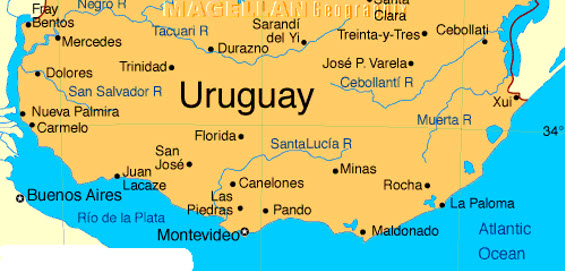
At 0822 she fired a salute of 21 guns to the nation of Uruguay. Uruguay reciprocated by firing a salute of 21 guns in return. Shortly after the ship passed Sarandi breakwater and at 0844 moored starboard side to Mulle de Escala Pier, Montevideo, Uruguay with standard class mooring lines, all doubled.
COMSOLANT left the ship to call officially on the Honorable Robert F. Woodward, US Ambassador to Uruguay; Daniel Fernandez Crespo, President of the Montevideo Council; General Cipriano Oliveria, Uruguayan Minister of National Defense and Captain Victor Dodino, Inspector General of the Uruguayan Navy. USS Spikefish SS-404 stood into the harbor and moored alongside of port in the mid-morning rain. Lightning rolled silently through the clouds overhead, flaring suddenly in a yellow ball, as though igniting a trapped pocket of white gas inside each individual cloud.
SOLANT Chief of Staff left the ship to call officially on General Captain Angel N. Sierra, Uruguayan Maritime Perfect. Later that day, COMSOLANT, in the company of an honor guard, placed a wreath at the statue of General Jose Artigas, Built in 1949, it was to pay tribute to the 19th century general, sometimes called "the father of Uruguayan independence."
The weather continued to deteriorate. Liberty was cancelled for all hands. At 1855 Mullinnix set storm condition II, setting the starboard anchor underfoot, and put additional 1 1/8" bow and stern wires doubled to the pier. The sky was almost black. When lighting flared in the clouds it looked like Jimmy Stewart's flash bulbs in Rear Window. By 2000, the ship had made all preparations for getting underway on one half hour notice. She set the underway watch in addition to the import watch. Lightning quivering in the clouds like pieces of white thread while rain was twisting in sheets. The main engines were lit off shortly after midnight. Underway watches were stationed on the bridge and in after-steering. Deck security patrols were stationed throughout the ship. The gale force winds were cutting the tops off the waves. At 0330, USS Hartley was underway to proceed to sea to ride out the storm.
GO TO Liberty Call Montevideo 1959
_______________
By morning the threatening weather had passed. That afternoon, Mullinnix was underway for Bahia De Maldonado, Uruguay, in accordance with COMSOLANT Op Order 4-59 in the company of Rou Uruguay DE-1, Rou Artigas, USS Hartley, and USS Van Voorhis. Exercises were performed of the coast of Punta Del Este and by noon on 18 March, Mullinnix was back at Mulle De Escala pier in Montevideo with USS Joseph K. Taussig and USS Lester.
By 0900, the sun was struggling to break through the clouds and occasionally succeeding. With the Captain at the conn and the Navigator on the bridge, Mullinnix left port at 0918 on 23 March, steaming in a column formation at double standard distance. Guide in station one was Mullinnix, station two, Artigas DE2, station three Uruguay DE1; Station four Hartley, station five, Taussig. At 1520 the ship anchored in South West berth 21, Punta Del Este, in 5 1/2 fathoms of water, mud bottom with 35 fathoms of chain to the starboard anchor. Shortly thereafter the Unit Commanders and Commanding Officers of the other ships present came aboard for a conference with COMSOLANT to plan the exercises that were soon to follow.
At 0810 on 24 March, General Cipriano Olivera, Uruguay's Minister of National Defense and his party arrived on board for observation of the days operations. Mullinnix was underway at 0820 for Punta del Este operating area in accordance with COMSOLANT Op Order 4-59. She successfully performed crash back downs, high speed turns to starboard and to port, and ASW exercises with Taussig and Spikefish. Mullinnix returned to Montevideo in the early morning of 25 March.
GO TO Liberty Call Mar Del Plata, Argentina 1959
Mullinnix left Mar del Plata on 1 April for two days of exercises. The overcast sky drained of all traces of color from the sunlight so that the sea and land appeared to be bathed in a depressing gray light. A systematic search of the entire ship for J.R. "Junior" Green and Andy Weckbacher, both missing the 0615 master of restricted men, disclosed that they were not on board. Mullinnix left port without them.
The following two days were filled with exercises with Roa Trinidad D-34, Roa St Luis D-10, Roa San Juan D-9, USS Lester, and USS Van Voorhis. The crews stayed busy with anti-submarine exercises including the firing of the hedge hogs, expending five rounds. At 1020 on 2 April, Mullinnix blew the fuel strainer on boiler 2A.
On 3 April, Mullinnix was underway from Mar del Plata to fuel from ARA tanker P. Delgara at anchorage in the harbor. The following morning, she bid a fond farewell to Mar del Plata, in route to Recife, Brazil, leaving without shipmates Green and Weckbacher.
The forecast was for six days of smooth sailing to Brazil but somebody forgot to tell Mother Nature that. That afternoon the heavens opened up. How hard can it be to be a weatherman? The sky had gone gray, and the sea had gone coal black with it. Shafts of white light, like burning arrows, pierced the night sky. Groundswells burst on the bow in ropes of green and white foam. White caps, like bird wings, were visible all the way to the horizon. When the wind blew, the ocean changed shades of blue-black, as though it drew its color from the wind.
At 0410 on 9 April the lookouts sighted Cape Agostinho Light. In spite of the aid of civilian pilot Captain Lacera, Mullinnix collided with SS Tibagy as she was coming alongside the pier starboard side. Damage to the Tibagy was a four-inch gash in her steel hull about 30 feet aft from the port bow. Damage sustained by Mullinnix consisted of bending two collapsible lifeline stanchions near frame 202, starboard side. Fortunately, there were no personnel casualties.
GO TO Liberty Call Recife, Brazil 1959
Once safely docked, RADM Stephan left the ship to call officially on Vice Admiral Martini, Commandante Brazilian third Naval district, the American consul to Recife, Edward R. Phelan, and the Mayor of Recife. That afternoon, in a show of alliance support, a two man working party was assigned from Mullinnix to effect repairs to the hull of the Tibagy.
With the moon rising above MT52 into a magenta-black sky, Mullinnix was underway for Port of Spain, Trinidad at 0544 the following morning. In maneuvering to clear the pier, three strands of the number one line of the SS Tibagy were parted by Mullinnix. Damage to Mullinnix consisted of tearing away 4 lifeline stanchions and the helicopter netting on starboard side, frames 200 to 204. Once again, no personnel casualties were reported.
At 1214, with the sun scorching the ship, on 14 April she passed Chupara Point light. Then A. Diable light, followed by Chacachacare light and then Baleine light. The air was dead, superheated, stained with the smell of hot oily metal and the asphalt-like odor of the newly laid no-skid. At 1417 the ship moored port side to Pier 2, US Naval Station, Port of Spain BWI with standard class mooring lines all doubled. Ships present included USS Taussig, USS Hartley, USS Van Voorhis, USS Lester.
GO TO Liberty Call Port of Spain, Trinidad (Again) 1959
After taking on 38,000 gallons of fuel, Mullinnix was underway for the short trip to La Guaira, Venezuela on the morning of 20 April. In route she set her clocks back one half hour to conform with +4 ½ Quebec Romeo time zone. At 1612, she test fired the three pounder saluting battery, expending twenty-one rounds.
In the early morning near-light, the eastern sky was ribbed with strips of orange cloud. Mullinnix sighted Farallon Centinela Light. At 0800 she fired a twenty-one gun salute to the nation of Venezuela. A few moments later, the nation returned the salute with twenty-one guns. By 0816, Mullinnix was moored starboard side using doubled standard class mooring lines. Ships present include units of the Venezuelan fleet, USS Van Voorhis, USS Hartley, USS Taussig, USS Lester, and USS Spikefish.
High-level visitation continued in Venezuela as Radm Stephan called on Radm Carlos Larrazabal and the US Ambassador to Venezuela, Edward J. Sparks. The Chief of Staff left the ship to call officially on Port Officials at Naval Squadron Headquarters, MACUTO. Shortly before noon, officials came on board to return call of Chief of Staff including Captain Rodriquez, Commander Venezuelan Destroyer Squadron, CDR Medina, Director, Venezuelan Naval Academy. Major Carrero, Commander, Venezuelan National Guard; and Mr. Tulio Memdes, Prefect, La Guaira.
22 April was a special day for Mullinnix as His Excellency, the President of Venezuela, made an official call on COMOLANT - Radm Stephan. The first ever sitting-president of any country to visit Mullinnix. The ship rendered honors and a twenty-one gun salute.
Another first was recorded the following day as Mullinnix experienced her first change in leadership. Per his request for no fanfare, LCDR John T. Murray was unceremoniously replaced as XO by LCDR J. H. Ratliff.
GO TO Liberty Call La Guara, Venezuela 1959
Major exercises were planned for 28 April. At 1015 Mullinnix was underway and by 1245 was conducting submarine exercises with USS Spikefish, USS Lester, General Moran D-22, General Flores D-13, Almirante Garcia D-33, Almirante Clemente D-12, and USS Van Voorhis. At 1550 Almirante Garcia had to proceed back to port due to salting of her boilers. The ships returned to La Guaira at 0600 the following morning. After debriefing the exercises, Mullinnix steamed out of La Guaira, headed to US Naval Station, Trinidad, West Indies, in route to Norfolk. With the clouds quaking with thunder under a slate gray sky, she moored port side of pier 2 the next morning at Port of Spain to take on fuel. At 1115 she was underway for US Naval Base, Norfolk, VA in accordance with COMSOLANT Movement Order 9-59. Homeward bound.
Heading home. Standing on the bridge wing at sunset with salt spray in your face and sharp ocean winds whipping from the oceans of the globe - the ship beneath you feeling like a living thing as her engines drive her through the sea towards home port. At sea, time is suspended. Time passes both very slowly, then so fast when the next port of call, and liberty arrives. The days at sea are immediately forgotten, replaced with fights, brushes with the local law. Even love affairs, fueled by the collective imaginations of the crew and fanned by the salt-flecked wind, would burn away as quickly as an early morning fog when once again the Mullinnix inched away from the pier.
"Did I really tell that big breasted bartender I loved her?" Bostic asked Lister. "Did I really give her my home address? Did I really ask her to spend the rest of her life with me?"
"Yes you did, you stupid fuck!" answered Lister.
The Mullinnix wasn't the first Navy ship in that port, nor would she be the last. The girls understood the code. The code excused sailors' indiscretions on liberty - DCOL - 'doesn't count on liberty'.
The ocean was dark and flecked with white caps. A few tattered clouds drifted across the blue sky, as Bostic, Lister and their shipmates, with a life time of memories and stories crammed into a couple months, steamed on a heading that would take them home.
To navigate the correct heading a ship needs its gyro. On 4 May, at 1002, the ship experienced a 'gyro casualty' to the MK 19 Gyro when the main synchro amplifiers went out. Immediately the Captain ordered the ship to steer a magnetic course of 348T while the ship shifted to the MK 23 Gyro compass, steering course 342T. As was common place during the entire cruise, the crew's training and expertise paid off once again. By 1008 they had the Mk 19 Gyro compass back in commission and the ship was steaming normally once again.
At 0042 on the morning of 5 May she sighted Currituck Light Bell Buoy 6. The morning mist cleared. A faint dome of light was rising in the east. The ship shuddered slightly as she swung onto her new course and turned to meet the bay. By 0508 she was maneuvering to conform to Thimble Shoals channel, passed Old Point Comfort and Fort Wool. The special sea detail was stationed at 0752 as the dawn took on the watery hue of a tequila sunrise. She passed Sewells Point at 0808 and moored twenty-four minutes later portside to the USS Stormes DD-780, in a nest of four destroyers and one tender at pier 20 berth 201, Destroyer Submarine Piers, US Naval Base, Norfolk, VA. Besides the Stormes, ships in the nest were USS Tidewater AD-31, USS Lowry DD-770, US Laffey DD-724. SOPA was COMASDEFORLANT. Captain Selden J. Small, Commander Destroyer Squadron Thirty Two, hoisted his pennant aboard Mullinnix.
As customary, two-thirds of the crew was given liberty. Some walked from the pier in the arms of loved ones - wives, sons, daughters, parents, brothers, sisters, and grandparents. Others, the liberty hounds, headed to the strip with the hopes to wash out the tastes and memories of South America with a cold American beer and a warm American girl.
Under a bright May sun, the crew said farewell to Seaman Andy Weckbacher on 13 May. Seaman Weckbacher was delivered, under armed guard to Camp Allen, US Naval Retraining Command, Norfolk, VA, for 'safekeeping'. Just like that, unceremoniously, the rain-of-terror of one Andy Weckbacher was over. Seven days later Andy was found guilty of violation of articles 86, 95, and 134 of the Uniform Code of Military Justice (UCMJ) and was awarded a special court martial. Farewell for good? Did the navy really appreciated the resourcefulness of Andy? Only time would tell.
To be continued...
1959 Unitas I  Clips
Clips
Courtesy Jack O'Connell & Jim Young
USS Lester DE-1022
Unknown DD or DE
USS Hartley DE-1029
USS Ranger CV-61
USS Spikefish SS-404
Mullinnix Crossing The Equator
Mullinnix with USS Lester DE-1022
Mux MT 31 (Forward 3")
Crossing The Equator Festivities - NOT Taken on Mullinnix
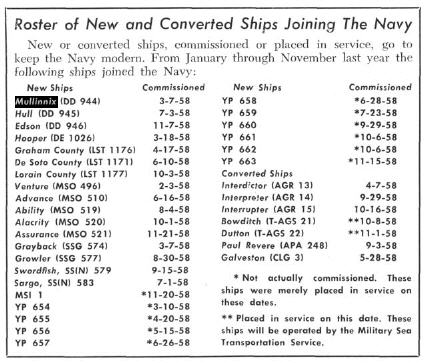
ALL HANDS Magazine Feb 1959

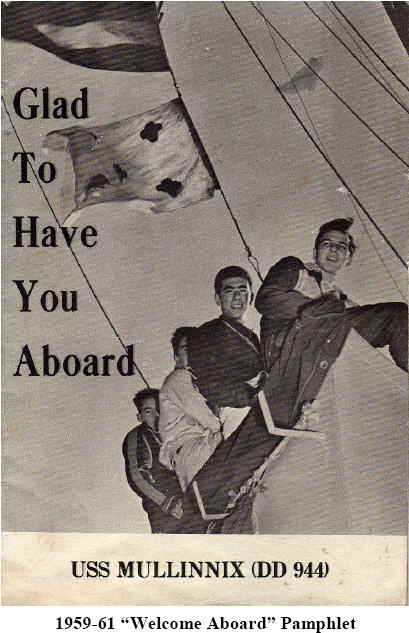
Click on the above image to open PDF file
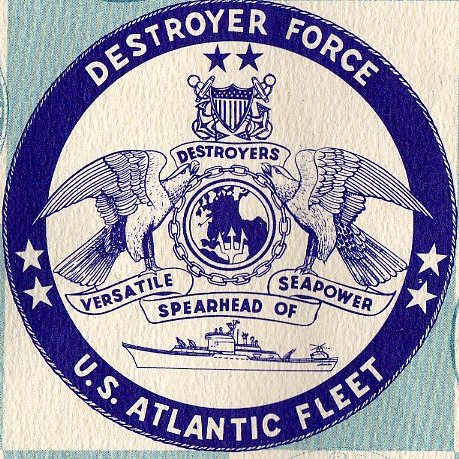
Commanding Officers (1959-1963): John C. Hill II, William H. Shaw, G.R. Reinhart.
GO TO Liberty Call Trinidad 1959
GO TO Liberty Call Rio 1959
GO TO Liberty Call Montevideo 1959
GO TO Liberty Call Mar Del Plata, Argentina 1959
GO TO Liberty Call Recife, Brazil 1959
GO TO Liberty Call Port of Spain, Trinidad (Again) 1959
GO TO Liberty Call La Guara, Venezuela 1959
GO TO 1959 2ND Fleet and NATO Exercises
Back to Ship History
Home
© 2006 by Frank Wood, All rights reserved
 1959 - Unitas I
1959 - Unitas I 
 1959 - Unitas I
1959 - Unitas I 


 Clips
Clips



